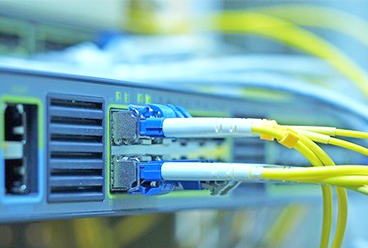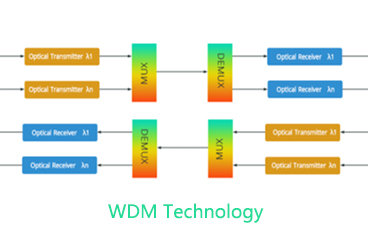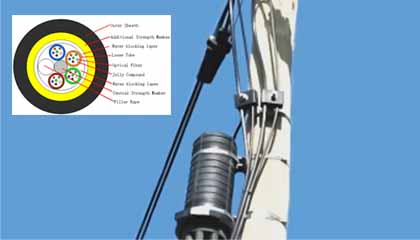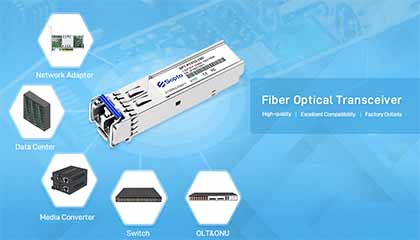Fiber optic cables are essential components in modern communication networks, offering various types and standards to meet diverse requirements. Understanding the distinctions among OM1, OM2, OM3, OM4, OM5, G.652D, G.657A1, and G.657A2 fiber types is critical for selecting the right solution for specific applications.
Multimode Fibers: OM1, OM2, OM3, OM4, and OM5
Multimode fibers are primarily designed for short-distance transmission and are categorized based on their bandwidth and performance. They are commonly used in data centers, local area networks (LANs), and enterprise environments.

OM1
Core Diameter: 62.5 µm
Bandwidth: 200 MHz•km at 850 nm
Maximum Distance: Up to 300 meters at 100 Mbps
Applications: Suitable for legacy systems and low-speed networks.
Key Feature: Limited bandwidth and distance, making it less suitable for modern high-speed networks.
OM2
Core Diameter: 50 µm
Bandwidth: 500 MHz•km at 850 nm
Maximum Distance: Up to 550 meters at 1 Gbps
Applications: Medium-speed networks and small-scale enterprise setups.
Key Feature: Improved bandwidth compared to OM1.
OM3
Core Diameter: 50 µm
Bandwidth: 2,000 MHz•km at 850 nm
Maximum Distance: Up to 300 meters at 10 Gbps
Applications: Optimized for 10 Gbps Ethernet and compatible with VCSEL technology.
Key Feature: Higher performance suitable for high-speed applications.
OM4
Core Diameter: 50 µm
Bandwidth: 4,700 MHz•km at 850 nm
Maximum Distance: Up to 550 meters at 10 Gbps
Applications: Advanced data centers and high-bandwidth requirements.
Key Feature: Enhanced bandwidth for longer distances at high speeds.
OM5
Core Diameter: 50 µm
Bandwidth: Similar to OM4 but supports wider wavelength range (850-950 nm)
Maximum Distance: Comparable to OM4
Applications: Optimized for Shortwave Wavelength Division Multiplexing (SWDM), supporting 40 Gbps and 100 Gbps.
Key Feature: Multimode fiber designed for emerging technologies.
Single-Mode Fibers: G.652D, G.657A1, and G.657A2
Single-mode fibers are tailored for long-distance and high-capacity transmission, widely used in telecom networks, metropolitan area networks (MANs), and backbone infrastructures.
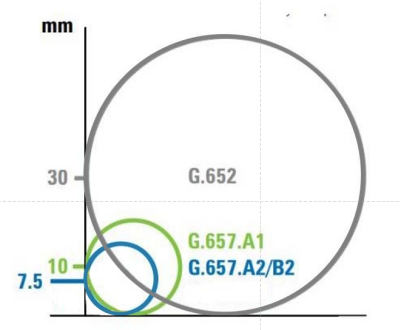
G.652D
Core Diameter: ~8-10 µm
Operating Wavelength: Optimized for 1,310 nm and 1,550 nm
Key Feature: Low attenuation and chromatic dispersion, suitable for long-haul communication.
Applications: Backbone networks, metro networks, and long-distance links.
Special Characteristics: Standard single-mode fiber with a balanced cost-to-performance ratio.
G.657A1
Core Diameter: ~8-10 µm
Bend Radius: Minimum bend radius of 10 mm
Compatibility: Fully compatible with G.652D fibers
Applications: Fiber-to-the-home (FTTH) deployments and indoor cabling.
Key Feature: Improved bend resistance, making it suitable for complex cabling scenarios.
G.657A2
Core Diameter: ~8-10 µm
Bend Radius: Minimum bend radius of 7.5 mm
Compatibility: Fully compatible with G.652D fibers
Applications: High-density indoor environments and challenging installations.
Key Feature: Superior bend performance compared to G.657A1.
Comparative Summary
Fiber Type | Core Diameter (µm) | Bandwidth (MHz•km) | Max Distance | Applications |
OM1 | 62.5 | 200 | 300 m | Legacy networks |
OM2 | 50 | 500 | 550 m | Small enterprises |
OM3 | 50 | 2,000 | 300 m | Data centers |
OM4 | 50 | 4,700 | 550 m | High-speed systems |
OM5 | 50 | 4,700+ | 550 m | Emerging technologies |
G.652D | ~8-10 | N/A | Long-haul | Backbone networks |
G.657A1 | ~8-10 | N/A | Indoor FTTH | Bend-insensitive applications |
G.657A2 | ~8-10 | N/A | Complex setups | High bend resistance |
Selecting the right fiber type involves evaluating network requirements, including distance, bandwidth, and deployment environment. Multimode fibers (OM1-OM5) are ideal for short-distance and high-speed data transfer, while single-mode fibers (G.652D, G.657A1, and G.657A2) provide robust solutions for long-distance and high-capacity networks. Understanding the unique features of each fiber type ensures optimal network performance and cost efficiency. Sopto Technology is a fiber optic product manufacturer and supplier from Shenzhen, China. We have our own fiber optic cable factory and can produce and supply various types of fiber optic cables. Welcome to contact us for more information. email: [email protected]. whatsapp : https://wa.me/+8618688759008/
Tags : OM1, OM2, OM3, OM4, OM5, G.652D, G.657A1, G.657A2, Fiber Types
— END —




